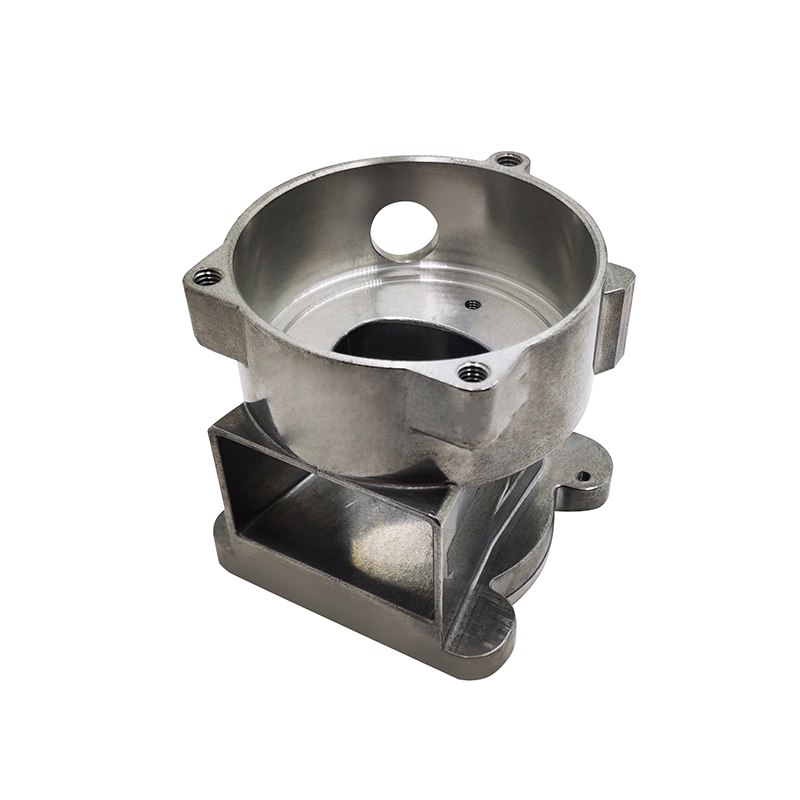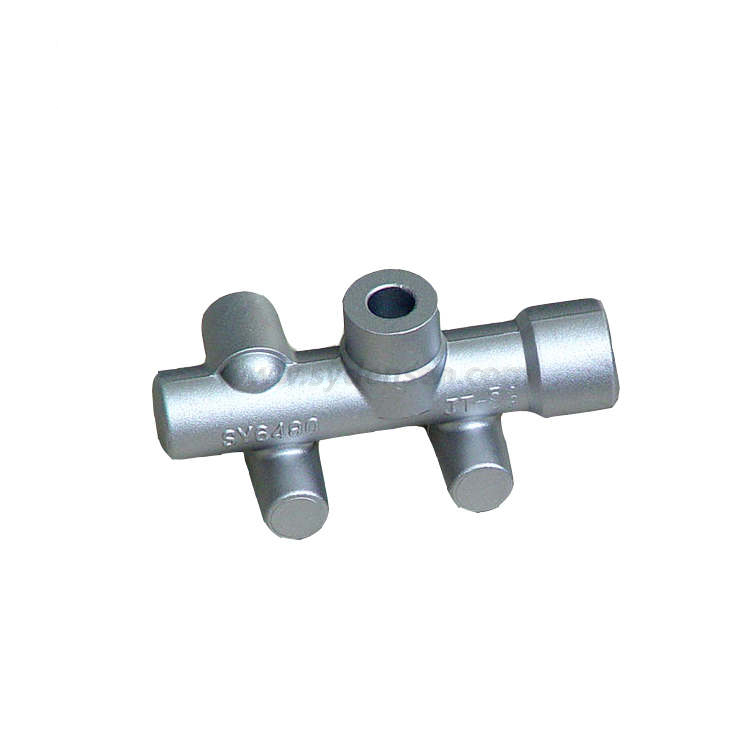Enhancing Performance in Precision aluminum casting Operations
Wiki Article
Aluminum Casting Explained: Secret Truths and Insights for Industry Professionals
Aluminum casting serves as an important procedure in modern manufacturing, shaping components across various industries. Its diverse techniques, such as sand and die casting, deal with different production requirements. The distinct properties of aluminum alloys improve their applicability, yet challenges remain in maintaining quality and efficiency. Recognizing these facets is essential for sector experts. What are the most recent innovations and ideal techniques that can additionally optimize this procedure?Introduction of Aluminum Casting Processes

Crucial element of aluminum casting procedures consist of the preparation of mold and mildews, which might be made from sand, steel, or ceramic products, depending on the intended use. Additionally, temperature level control is critical to ensure correct melting and solidification of aluminum.
The casting procedure allows for elaborate layouts and can achieve high levels of dimensional accuracy. As soon as cooled down, the castings may undergo finishing operations such as machining or surface area treatment to meet certain efficiency standards. On the whole, aluminum casting acts as a functional production method, successfully satisfying the varied needs of different industries.
Kinds Of Aluminum Casting Techniques
In the domain name of aluminum casting, different methods are employed to achieve different outcomes. Sand casting strategies supply adaptability and cost-effectiveness for complex forms, while die casting processes offer high accuracy and performance for automation. Comprehending these methods is essential for choosing the appropriate strategy based upon job needs.Sand Casting Strategies
Sand casting methods stand for an essential technique in aluminum casting, where sand is utilized as a mold product to shape liquified metal. This process includes creating a pattern from the preferred part, which is after that positioned in a sand blend to develop a mold and mildew. The sand is compressed around the pattern, and after removal, it produces a dental caries in the shape of the component. Molten aluminum is put into this cavity, allowing it to cool and solidify. One substantial benefit of sand casting is its adaptability; it can suit complicated shapes and large parts. In addition, the products made use of are relatively economical, making it an obtainable option for different manufacturing applications in the aluminum industry.Die Casting Processes
Die casting processes are a famous approach for shaping aluminum components, using high-pressure techniques to compel molten metal into precisely crafted molds. This procedure is specifically preferred for its capacity to create intricate shapes with limited tolerances and a smooth coating. There are two key sorts of die casting: hot chamber and chilly chamber. Hot chamber die casting is suitable for steels with reduced melting factors, enabling for faster manufacturing prices. Alternatively, chilly chamber die casting is excellent for greater melting point metals, calling for a different melting heating system. Both methods enhance effectiveness and lower product waste, making them important in auto, aerospace, and customer goods sectors. Understanding these processes helps professionals choose one of the most ideal technique for their certain applications.Material Feature of Aluminum Alloys

Stamina and Longevity
Toughness and longevity are critical features of aluminum alloys that make them suitable for different casting applications. These materials display a desirable strength-to-weight proportion, enabling the production of light-weight yet durable components. When it come to tensile strength, specific aluminum alloys can be crafted to stand up to significant tons without warping. This building is especially vital in sectors such as aerospace and automobile, where performance and security are paramount. In addition, aluminum alloys commonly retain their mechanical buildings under diverse temperature conditions, ensuring constant performance. The innate ductility of these alloys additionally permits effective shaping during the casting procedure, making it easier to create complex geometries. In general, the toughness and resilience of aluminum alloys contribute significantly to their prevalent use in sophisticated applications.Deterioration Resistance Characteristics
While aluminum alloys are valued for their toughness and lightweight residential or commercial properties, their deterioration resistance is one more crucial feature that enhances their suitability for different applications. Aluminum naturally creates a safety oxide layer when subjected to moisture, which aids to avoid further oxidation. This fundamental home makes aluminum alloys especially beneficial in environments vulnerable to corrosion, such as aquatic and commercial settings. In addition, various alloy structures can affect resistance levels, with certain alloys especially engineered to boost this characteristic. Therapies like anodizing can even more boost corrosion resistance by enlarging the oxide layer. Understanding the corrosion resistance of aluminum alloys is vital for industry professionals when choosing materials for jobs requiring longevity and long life in challenging environments.Benefits of Aluminum Casting in Production
Aluminum casting offers numerous advantages in manufacturing, making it a preferred selection for numerous markets. One significant advantage is its lightweight nature, which adds to minimized transportation expenses and boosted energy effectiveness in final product. Furthermore, aluminum's excellent thermal and electric conductivity boosts performance in applications calling for warmth dissipation or electric transmission.The product's capacity to be cast right into elaborate forms enables design flexibility, lowering the need for additional machining processes. On top of that, aluminum casting exhibits exceptional rust resistance, resulting in longer product life-spans and lower maintenance costs.

Typical Applications of Aluminum Castings
The flexibility of aluminum casting allows its extensive use across different markets. Typical applications include auto components, where lightweight and corrosion-resistant components, such as engine blocks and transmission real estates, boost automobile performance. In the aerospace field, aluminum spreadings are used for architectural parts, offering strength without Get the facts including substantial weight.
Additionally, the electrical sector take advantage of aluminum castings in manufacturing rooms and warmth sinks, where thermal conductivity is crucial. The consumer items industry additionally integrates aluminum castings in items like pots and pans, furniture, and ornamental things, integrating looks with functionality.
The construction sector utilizes aluminum spreadings for architectural aspects, window frames, and components, which supply resilience and layout versatility. Generally, the diverse applications of aluminum spreadings highlight their significance in contemporary manufacturing, adding to improvements in efficiency and item layout throughout several fields.
Technologies and Technological Advancements
As industries remain to evolve, advancements in Get More Info aluminum casting technology are changing manufacturing processes and item capabilities. Developments in 3D printing and additive production have actually allowed the development of intricate geometries that were previously impossible to accomplish with conventional methods. These technologies enable rapid prototyping, reducing lead times and costs.Furthermore, enhancements in mold style and products have actually enhanced the casting procedure by boosting performance and reducing waste. The integration of wise production methods, such as IoT tools and real-time data analytics, permits better monitoring and optimization of production criteria, leading to better outputs.
Growths in aluminum alloys give boosted strength, corrosion resistance, and light-weight properties, providing to the growing demands in vehicle and aerospace industries. Collectively, these technologies are not only improving efficiency however likewise satisfying the strenuous criteria of modern-day engineering applications.
Best Practices for Quality Assurance in Aluminum Casting
Ensuring top quality outputs in aluminum casting calls for adherence to ideal techniques that encompass different stages of the manufacturing process. First, complete product examination is crucial to validate the top quality of aluminum alloys utilized, as impurities can significantly influence the last item. Carrying out accurate melting and putting strategies decreases issues; preserving optimal temperatures avoids oxidation and promotes harmony.Furthermore, mold style plays a crucial role; making use of computer-aided design (CAD) can improve accuracy and minimize human mistake. Routine monitoring of the cooling procedure is essential to avoid warping and shrinking. In addition, utilizing non-destructive screening methods, such as ultrasonic or X-ray assessments, helps identify internal problems without damaging the components.
Lastly, establishing a responses loop with engineers and operators promotes continuous enhancement, guaranteeing that high quality control procedures advance alongside technological innovations. By following these best practices, makers can improve the reliability and efficiency of aluminum castings.
Frequently Asked Concerns
What Are the Environmental Impacts of Aluminum Casting?
The environmental impacts of aluminum casting include substantial power usage, greenhouse gas exhausts, and possible water pollution from factory procedures. Additionally, bauxite mining for aluminum ore can bring about environment destruction and dirt deterioration.Exactly How Does Aluminum Casting Contrast to Other Metal Casting Procedures?
Aluminum casting usually offers advantages in light-weight parts and corrosion resistance contrasted to various other processes, such as iron or steel casting, which may supply better strength yet cause larger and less corrosion-resistant items. - Aluminum Casting CompanyWhat Are Common Issues in Aluminum Castings and Their Causes?
Common issues in aluminum castings consist of porosity, contraction, and additions. Reasons often stem from inappropriate putting methods, poor mold and mildew style, or contamination of the liquified steel, affecting the final item's stability and efficiency.What Security Preventative Measures Should Be Taken Throughout Aluminum Casting?
During aluminum casting, vital safety precautions include using protective gear, ensuring proper ventilation, keeping a clean work space, managing liquified metal with treatment, and following recognized protocols to minimize risks of burns, inhalation risks, and mishaps.How Can I Boost the Effectiveness of My Aluminum Casting Workflow?
To enhance effectiveness in aluminum casting procedures, one need to maximize mold style, streamline material handling, utilize automated processes, carry out regular upkeep on devices, and spend in staff member training to enhance skills and performance.Different methods exist, aluminum casting includes a number of key processes that cater to various applications and demands. Key elements of aluminum casting procedures consist of the preparation of mold and mildews, which may be made from sand, steel, or ceramic products, depending on the planned use. Sand casting strategies represent an essential technique in aluminum casting, where sand webpage is utilized as a mold material to shape molten metal. As markets proceed to develop, innovations in aluminum casting modern technology are changing production processes and product abilities. Making sure top notch outcomes in aluminum casting requires adherence to ideal methods that include numerous phases of the manufacturing process.
Report this wiki page